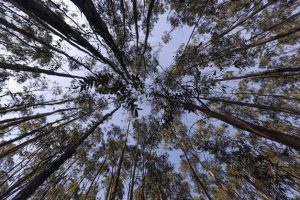
BY ALAZAR SHIFERAW
The Ministry of Agriculture (MoA) says beyond food quantities, the importance of nutritional quality and diversity of foods consumed per day is increasingly getting recognition as essential for a healthy diet. Cognizant these nutritionists’ are urging stakeholders to secure the nutrient content food items on the table for it has much return on wellbeing of human being.
MoA Senior Nutrition Sensitive Agriculture (NSA) Advisor Tewdros Girma said “The global Panel on Agriculture and Food Systems for Nutrition recently called for a paradigm shift in food systems thinking away from feeding people to nourishing people”.
Nutrition specific interventions are at high time because it is vital in addressing immediate and some intermediate causes of malnutrition. Addressing immediate causes of malnutrition includes treatment of severe acute malnutrition, disease management and maternal and child micronutrient supplementation, are important in ensuring food security as well sufficiency, he noted.
Thus, nutrition sensitive agriculture is a food-based approach that seeks action of pertinent stakeholders in bid to ensure the access to a variety of affordable, nutritious, culturally appropriate and safe foods in adequate quantity and quality to meet the dietary requirements of populations in a sustainable manner, he said.
Importantly, nutrition-sensitive agriculture contributes to improving health outcomes, through production of diverse, safe and nutrient-rich food and income generation that can facilitate access to health services.
He further said that according to FAO 1996, food security exists when all people at all times, have physical and economic access to sufficient, safe and nutritious food to meet their dietary needs and food preferences for an active and healthy life.
Why should agricultural sectors be nutrition sensitive and so important for nutrition security? Because, a food based approach is a proven cost effective and sustainable approach in reverting the existing malnutrition situations in our country. It is cheaper and a sustainable approach and it is natural for our system. It contains multi-nutrients and tremendous potential of agriculture to nutrition.
Significantly, both surplus producing and food insecure areas are equally suffered from under- nutrition. Trends of under-nutrition reduction in Ethiopia are not promising for meeting with SDG of zero hunger.
With these trends, Ethiopia is unable to meet the zero hunger of SDGs and Sekota deceleration of zero stunting in children less than two year without the tremendous contribution of agricultural sectors. Besides, the complex and multifaceted problems of malnutrition situation in Ethiopia demands agriculture sectors intervention.
In terms of dairy products consumption, current milk consumption per capita of some other African countries, such as Kenya, Tanzania, Uganda 90L , 26L, 22L respectively. But the FAO/WHO recommendation is 175-200kg/capita/year. However, Ethiopian Population growth rate is 2.57% in 2019. Post-harvest loss of milk in Ethiopia is 20-35 percent. This shows that there is a high population growth rate but low milk consumption per capita.
Moreover, Ethiopia’s per capita consumption of fresh fruits is approximately 7 kg per person/ year. This is far below the WHO and FAO recommended minimum level of dietary intake. It is eight times lower than the average figure for the East Africa region, which stands at 55 kg per person /per year. Likewise, Ethiopia’s consumption level is well below neighboring countries, Sudan and Kenya 79, 55 kg per person, he said.
Meaningfully, energy supply has improved over the years from around 1645 kcal in 2000 to 2400kcal in 2018. Nonetheless, the diversity of diets remains low in that lead provides insufficient amounts of protein, vitamin A, and zinc and other essential minerals. Also, malnutrition severity in rural setups is more than 85 percent. Hence, diversified consumption matters most.
As well, most Ethiopian households are unable to afford a nutrient diet. The cost of a nutritious diet remains unaffordable for at least three out of four Ethiopian households.
Addressing the bottlenecks of food availability and accessibility such as inadequate access to nutritious and safe foods is one of the primary drivers of the persistently high burden of under nutrition among young children in Ethiopia.
Lack of food safety handling along the value chain, 30 percent post-harvest loss, lack of food transformation technologies ,the old practice of farmers focusing on staple food production and Poor market linkages in pastoralist areas are the major drivers that exposes children in Ethiopia to poor food availability and accessibility .
According to a complementary feeding affordability study (2018/2019); animal-source protein cannot be affordable by most households in Ethiopia, particularly the lowest spending one. Most households struggle to afford the nutritious foods in adequate quantities to meet even 50 percent of their 6-23 month-old children’s dietary requirements for zinc, energy, iron, and protein, he said.
Hence stunting in rural Ethiopia is 41 percent and 26 percent urban areas. Only less than 10 percent of under-five children get an optimal diet for their age. Low in diversity and low in quantity is observed. Women dietary diversity score is about 1.6 out of 9 food categories.
Tewodrs further said malnutrition impacted agricultural productivity at least by 17 percent reduction. Today, more than 2 out of every 5 children, nearly 5.5 million in Ethiopia are stunted. 28 percent of all child mortality in Ethiopia is associated with under nutrition. 16 percent of all repetitions in primary school are associated with stunting .
Child mortality associated with under nutrition has reduced Ethiopia’s workforce by 8 percent. 67 percent of the adult population in Ethiopia suffered from stunting as children. The annual costs associated with child under nutrition are estimated at 55.5 billion Birr which is equivalent to 16.5 percent of the country’s GDP, he said.
Therefore, carrying out diversified food production and consumption help to improve nutrition is the solution the call of the day. It is time for agriculture to engage more than ever to supply the market.
Consequently, food diversification has the potential to improve; availability and affordability, stability and consumption of diverse foods and to promote nutrition, healthy and sustainable diets for all.
Integrated farming systems that are producing multiple agricultural products from different farm enterprises that share available resources are highly essential. The system integrates different crop production, crop and animal production, legume-based cropping systems including crop rotation and intercropping.
Furthermore, home gardening with emphasis on nutrient-dense varieties of vegetables and fruit trees and small-scale integrated farming systems are so important.
Similarly, livestock ownership can contribute to dietary diversity and nutritional outcomes through home consumption and income generation. Complementary activities such as beekeeping, mushroom production and maintaining fish ponds should be also practiced.
According to Tewodros, since biodiversity plays a key role in ensuring dietary diversity and assuring nutrient adequacy restoring effort should be given due attention.
Globally, there is a huge loss of biodiversity due to environmental degradation, industrialization and urbanization. Protecting biodiversity and prioritizing genetic resources to develop new nutrient dense, pest-resistant, climate-smart varieties is a key to combat malnutrition.
The Ethiopian Herald January 23/2021





